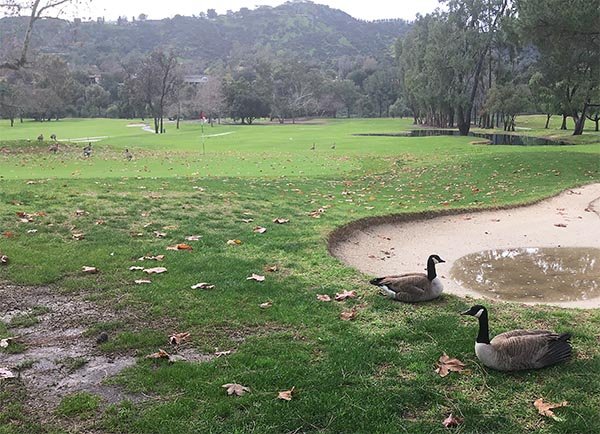
"We have a good story to tell. We just need to do a better job telling it."
I hear this, or some variation of it, a lot when talking about the environmental footprint of a golf course.
 As it turns out, a lot of people in this business actually are very good at telling that story of environmental stewardship, sustainability, establishing and protecting habitat, water conservation and outreach and education.
As it turns out, a lot of people in this business actually are very good at telling that story of environmental stewardship, sustainability, establishing and protecting habitat, water conservation and outreach and education.
What golf, more specifically the turf business, does not have, outside the four walls of its own industry, is a dependable partner to help tell that story. There is a lot of preaching to the choir within the trade, but without that messenger outside the industry, turf does not have a consistent audience to hear its message. The audience golf needs is the consumer golfer, non-golfers, children, women and government agencies.
The work of superintendents to create a sustainable future for the game is one that should be told. Because of the misconceptions still surrounding you and your profession, and your footprint on the ecosystem, the truth of what you are doing is a tale that must be told.
Field days and field trips at the golf course can be effective at educating others about what you do, but if you are waiting for an assist from the mainstream media, good luck.
It can be humbling if not downright embarrassing to be even loosely associated with the media. It is an industry riddled with gaffes, some of which are a byproduct of a lack of preparation, like this reporter who asked University of Oklahoma quarterback Jalen Hurts to clarify that he actually prefers winning to losing. Others are more heinous in nature, like former New York Times reporter Jayson Blair who was relieved of his duties over numerous allegations of plagiarism.
Bangor Municipal Golf Course in Maine recently worked toward renewing its Audubon Cooperative Sanctuary status, which it has held since 2013. Kudos to all involved at Bangor. Regardless of what anyone in this business thinks about the Audubon program, it can be an effective tool in promoting environmental stewardship efforts to those who do not understand this industry.
When a reporter from the local paper came calling to tell the story, he went where many in his field go when talking about environmentalism on a golf course - to the head pro and then the assistant pro. No mention of the superintendent or if the course even has one.
For the record, superintendent John Kelley has been at Bangor as an assistant superintendent and head superintendent for almost 20 years. When it comes to Audubon-specific criteria like environmental planning, wildlife and habitat management, chemical use reduction and safety, water conservation, water quality management, and outreach and education, no one is better equipped than himt to discuss what Bangor has done to retain that status. The head pro and assistant pro know that and so would any reporter who did their homework.
Instead, the story went on to say that such stewardship efforts are important, because "golf courses can receive some negative attention based on their environmental impact. Whether it be using bad chemicals, using too much water, or destroying natural wildlife."
There is no evidence offered to support these claims, and shows a lack of preparation, because we know in today's golf industry these problems do not exist.
The move to solar power, the city said, will help Lone Tree save more than $1 million over the next two decades. That is specific information anyone can understand.
Pesticides have less active ingredient than ever, are target specific and are effective at low use rates. Golf courses use historically low levels of water and superintendents have proven to be leaders in developing water-conservation plans on a massive scale. Finally, literally every golf course is a sanctuary for plant life, birds, wildlife and pollinators.
Talk of sustainability also is being addressed, albeit in an easier-to-understand approach, across the country at Lone Tree Golf and Event Center, another municipal operation in Antioch, California. Lone Tree and the city recently unveiled an array of six solar parking canopies that provide shade for customers and renewable electric power for the golf operation.
The move to solar power, the city said, will help Lone Tree save more than $1 million over the next two decades. That is specific information anyone can understand. With the rising cost of power and labor in a state with a rapidly escalating minimum wage, finding ways to cut expenses might be the difference between remaining a viable business entity or being one of the many golf courses destined to close as the market continues its slow path toward self-correction.
The California Global Warming Solutions Act of 2006 was passed with a goal of reducing greenhouse gas emissions to 1990 levels by 2020. That was not enough for the City of Antioch, which 10 years ago established its own plan to reduce emissions by 25 percent by 2025 and 80 percent by 2050.
Real data and facts can help people outside the golf industry understand and get behind what this business is about.
The next time a local news reporter comes calling, be prepared with specific data about what you are doing: how much you apply and how often, how little water you use, how clean it is when it leaves your property and an inventory of plant and animal species. Give them and their readers numbers to chew on so they can quantify your efforts. In other words, do their homework for them, because they're giving both of us a bad name.

